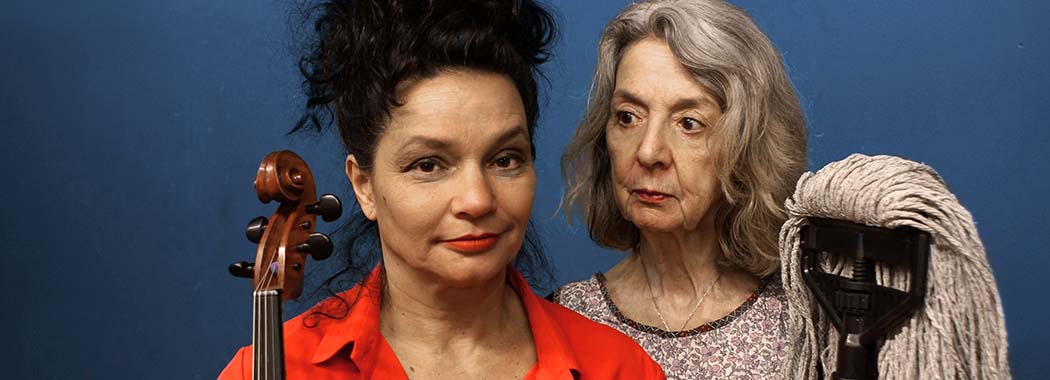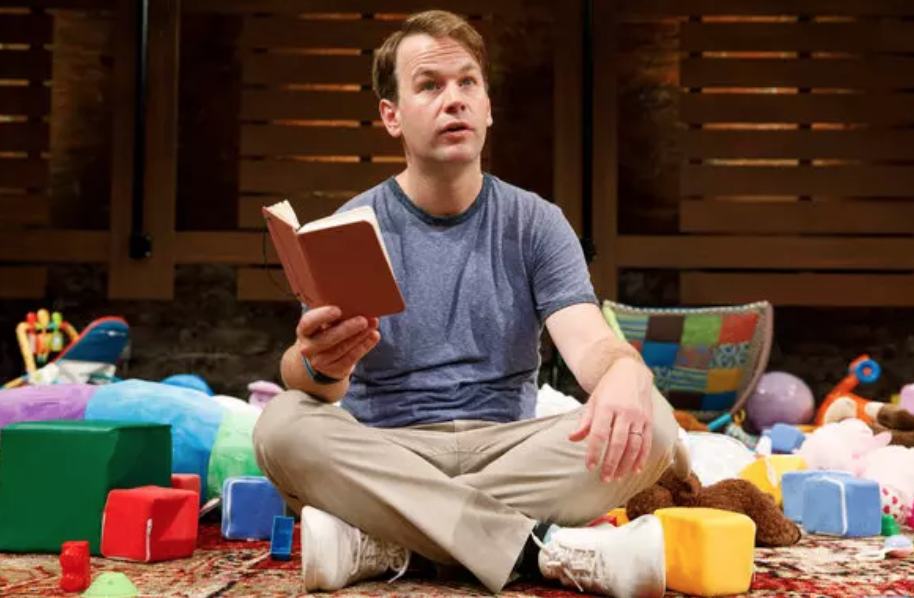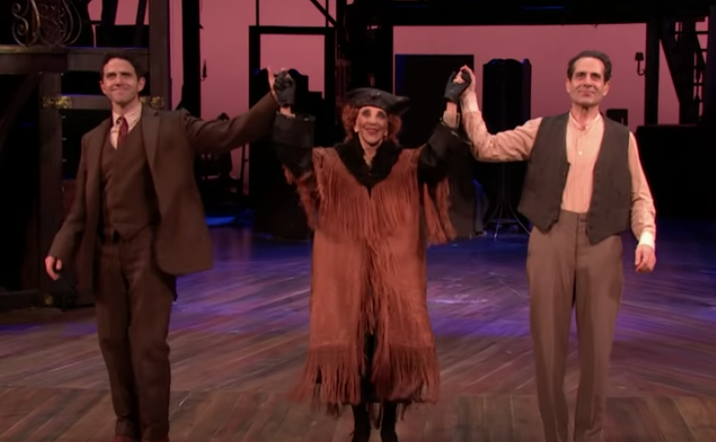
Santino Fontana, Andrea Martin, Tony Shalhoub
by Carol Rocamora
Attention, lovers of theatre legendry! A delectable offering from Broadway history is being dished up on-line. It’s called Act One, the 2014 production now live-streaming by Lincoln Center Theater. James Lapine’s scrumptious adaptation of Moss Hart’s memoir is as rich and as irresistible as a hot fudge sundae, featuring the fabulous Tony Shalhoub as the cherry on the top (make that “cherries” in the plural, since Shalhoub stars in three major roles).
Hart’s celebrated 1959 memoir tells the kind of coming-of-age tale that theatre legends are made of. A poor kid from the Bronx, son of immigrant parents, Hart was introduced to the theatre as a pre-teen by his eccentric Aunt Kate, and was hopelessly hooked (like so many of us who discovered theatre as youngsters). Young Hart worked his way up the ladder – simultaneously as an office boy for a road-tour producer named Augustus Pitou, and a director of revues in a Catskill hotel and the Jewish YMCA in Newark.
Meanwhile, Hart’s dream was to become a playwright. So he dashed off the first act of a new play called Once In A Lifetime, which he passed off to Pitou under a pseudonym. As theatre stories go, a network evolved. Pitou passed it on to the agent Frieda Fishbein, who introduced it to producer Sam Harris, who suggested that celebrated writer George S. Kaufman take a look at the unfinished script. Captivated by its potential, Kaufman agreed to collaborate with the young Hart and develop the play. And the rest, as they say, is theatre history.
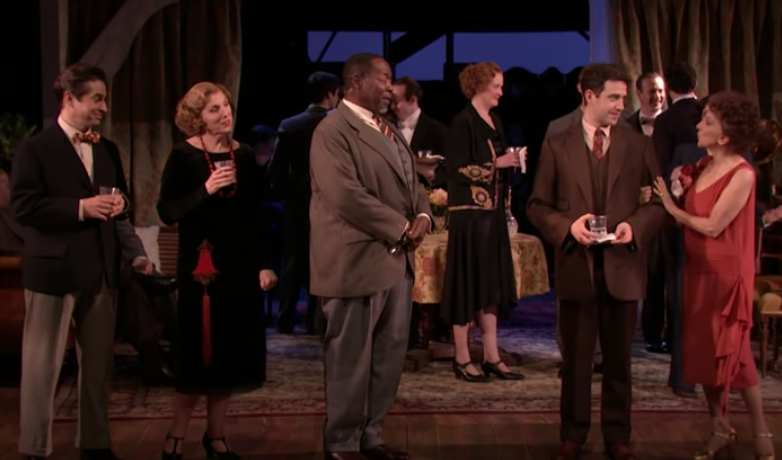
The sublime treat of Act One (superbly directed by Lapine) is the triple tour de force performance of Tony Shalhoub – as Moss’s embittered British-born father, as the theatre luminary George S. Kaufman, and as the older Moss Hart narrating the story in retrospect. It’s a marvel to watch Shalhoub magically morph from one role to another, as the story flashes back and forth from past to present. Shalhoub displays his comedic genius as the eccentric Kaufman, featuring the writer’s phobic tics (fear of handshaking, obsessive handwashing), compulsive creative rituals (lying on the floor while composing a scene, sharpening pencils meticulously), flashes of rudeness and temper, and so on.
The production is dazzling. Beowulf Boritt’s handsome two-tiered revolving set features various locales – in the balcony, where young Moss falls in love with the theatre, in the Bronx flat crammed with family members and boarders where Moss grew up, in Kaufman’s lavish New York townhouse (158 East 63rd) where the writing team collaborated, in the out-of-town tryout houses, and finally in the Music Box Theatre on 45th Street, where Once In A Lifetime opened in 1930 to rave reviews and launched Hart’s illustrious career.
The collaboration scenes between the two writers are the heart of this moving memoir. As the young Hart, Santino Fontana shines – as does Andrea Martin in various roles (Aunt Kate, Frieda Fishbein, and Beatrice Kaufman). An eye-popping ensemble of 22 play over 40 roles, and you’ll feast on scenes from theatre history – like the party that Beatrice Kaufman throws to introduce young Hart to the New York glitterati. The dazzling guest list included Dorothy Parker, Harpo Marx, Langston Hughes, Edna Ferber, and Alexander Wolcott, among others.
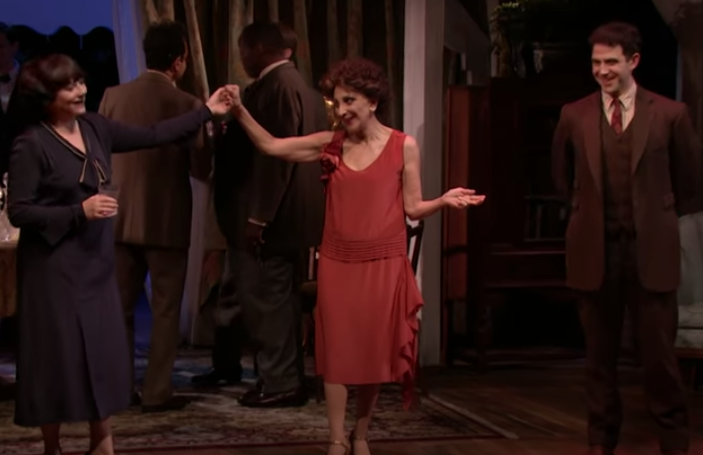
Though the play ends in 1930, Hart went on to collaborate with Kaufman on You Can’t Take It With You (1936) and The Man Who Came to Dinner (1939) (hence the double meaning of the play’s title, “Act One”). In the 1930s and 40s, Hart also collaborated with many other theatre greats, including Irving Berlin, Cole Porter and Richard Rogers. His directing career triumphed with My Fair Lady in 1956.
Meanwhile, you’ll treasure the memorable moment, dramatized in Lapine’s loving production, when – at the end of act one of Act One – a young Moss Hart stands on an empty stage, while the marquees of the great Broadway theatres are lowered from the theatre flies. “The knowledge that my play would be on one of those marquees made me want to laugh and cry,” says young Hart. “Now don’t dismiss this moment as maudlin,” he adds, as one by one, the gleaming neon signs of Martin Back, Majestic, Golden, and Morosco shine above this young hopeful’s head.
For us theatre folk, it’s not a maudlin moment at all. It’s a moving one – particular in these darkened days on Broadway. And it gives hope that they’ll shine again, once more.
Act One by James Lapine, adapted from Moss Hart’s memoir, live-streaming now through Friday July 3 on Lincoln Center’s YouTube channel – youtube.com/watch?v=0be2XsyaReY




